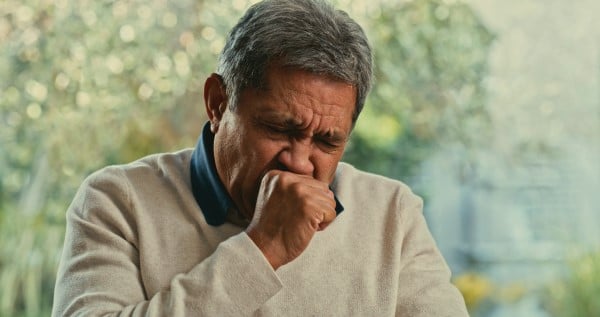Bridge to Care: Social Emergency Medicine and the Houseless Community
Bridge to Care: Social Emergency Medicine and the Houseless Community
Nicole Ovregaard, MSII - Oregon Health & Science University
EMRA MSC Pacific Regional Representative, 2021-2022
Tyler Rigdon, MSIII - California University of Science & Medicine
EMRA MSC West Coordinator, 2021-2022
Bianca Mayfield, MSIII - Burrell College of Osteopathic Medicine
EMRA MSC Southwest Regional Representative, 2021-2022
Against the backdrop of the COVID-19 pandemic, the relationship between access to healthcare and social inequities has become increasingly profound. While the problem is ongoing and more research is needed to clarify the extent of the impact, studies have already highlighted issues such as the increased prevalence of COVID-19 infection among those in homeless shelters [1], the disproportionate effect on black communities when compared to white communities [2], and the increased risk in morbidity and mortality in those with underlying health issues and limited access to treatment [3]. The year 2020 also brought with it an alarming increase of drug overdoses, the greatest number in a 12-month period ever recorded [9]. Social Emergency Medicine, the idea that the emergency department has a unique perspective to identify and investigate social determinants of health inequities and develop solutions to decrease these disadvantages in healthcare, is working to address these concerns, both inside and outside the emergency department.
Houselessness and health inequities are large topics of discussion in Social EM. In the annual 2020 homeless assessment Part 1 by the U.S. Department of Housing and Urban Development (HUD), several concerning findings were noted. On a single night, 580,466 people experienced houselessness across the US. The amount of unhoused people has increased in the last four years, and 2020 was the first year that family houselessness did not decrease in a decade. Additionally, people of color are over-represented in the houseless population compared to society as a whole [4]. Salhi et al. conducted one of the largest systematic reviews of the houseless population and emergency department use, highlighting the need for more research, education, and changes in practice in the ED for this unique population [5]. For instance, unhoused individuals are considered “elderly” at the age of 50, a definition given due to their propensity for illnesses generally seen in individuals 15-20 years their senior [6]. Therefore, unique considerations may be needed to address this population.
There is a continued need for help, growth, and improvement in Social EM. Current practice is not sufficient to stymie the rising impact of the houseless population on the ED. It begs the question: How can I be involved? Medical students have a large array of opportunities from their school, local community, and national resources. Students can start by creating a Street Medicine Interest Group, thereby helping to lead the charge in facilitating and enhancing healthcare resources to their local houseless community. Street medicine has a wider platform through the Street Medicine Institute [7], whose resources can be found here. Students can also get involved in student-run clinics, which provide and connect patients to services such as syringe exchange programs, naloxone training, sexually transmitted infection testing, and basic wound care.
Nicole Ovregaard, a 2nd-year medical student at Oregon Health & Science University, describes one of her initial encounters with the houseless population: “‘Hello?’ A soft voice emerged from one of the tents as I walked along the sidewalk. Our small team included me, a physician, a social worker, and a nurse. ”Hi, do you have any medical needs today?” The patient unzipped her tent to investigate our group. We offered her some snacks to soften our introduction and let her know what kind of services we could provide. Her face grimaced in pain as she described the abscess that had formed on her arm. After a brief exam and history by the tent, we discussed a plan for treatment and called her a cab for a ride to the closest urgent care”. Experiences like these can have a positive impact on the community and help shape our careers.
Locally, there are often many established organizations that students can be involved in. Organizations that focus on harm reduction may be impactful, as substance use disorder is prevalent in this population. Harm reduction works to reduce substance-related harm by educating patients on the dangers associated with injection substance use, such as the transmission of infections, physical injury to veins and risk of abscess, and other diseases including endocarditis and sepsis. Educating yourself and your patients about harm reduction can help reduce their risk of infection and overdose. Local syringe exchange programs have been shown to dramatically reduce rates of HIV and Hepatitis C [8]. Learning about your local resources can help you become an advocate for patients you encounter in your rotations that are unhoused.
There are various national resources one can delve into. EMRA has a Social EM Committee, which is free to join with EMRA membership and is committed to providing you with the most updated information in Social EM. Each year, the Social EM Committee has an annual meeting at EMRA at CORD to discuss current happenings and future plans. There are also many websites devoted to increasing awareness and providing information -- SocialEmpact is one such resource. Another recently formed and medical student-driven website is Social EMpathy, which hopes to launch more Social EM projects as well as organize various roundtables. Overarchingly, Social EM is a growing field with many opportunities for involvement and plenty of room to grow -- the most powerful tool a student can have is a budding interest in a topic with motivation to educate oneself and pursue it.
References:
- Baggett TP, Keyes H, Sporn N, Gaeta JM. Prevalence of SARS-CoV-2 infection in residents of a large homeless shelter in Boston. JAMA. 2020; (published online April 27.) DOI:10.1001/jama.2020.6887
- Yancy CW, COVID-19 and African Americans. JAMA. 2020; (published online April 15.) DOI:10.1001/jama.2020.6548
- Federico MJ, McFarlane 2nd, AE, Szefler SJ, Abrams EM. The impact of social determinants of health on children with asthma. J Allergy Clin Immunol Pract. 2020; (published online April 12.) https://doi.org/10.1016/j.jaip.2020.03.028
- HUD Releases 2020 Annual Homeless Assessment Report Part 1: HUD.gov / U.S. Department of Housing and Urban Development (HUD). HUD Releases 2020 Annual Homeless Assessment Report Part 1 | HUD.gov / U.S. Department of Housing and Urban Development (HUD). (n.d.). https://www.hud.gov/press/press_releases_media_advisories/hud_no_21_041.
- Salhi BA, White MH, Pitts SR, Wright DW. Homelessness and emergency medicine: a review of the literature. Acad Emerg Med 2018;25:577–593.
- Brown RT, Kiely DK, Bharel M, Mitchell SL. Geriatric syndromes in older homeless adults. J Gen Intern Med 2012;27:16–22.
- Street Medicine Institute https://www.streetmedicine.org/
- Centers for Disease Control and Prevention. (2019, May 23). Syringe Services Programs (SSPs) Fact Sheet. Centers for Disease Control and Prevention. https://www.cdc.gov/ssp/syringe-services-programs-factsheet.html.
Centers for Disease Control and Prevention. (2020, December 18). Overdose Deaths Accelerating During COVID-19. Centers for Disease Control and Prevention. https://www.cdc.gov/media/releases/2020/p1218-overdose-deaths-covid-19.html.
Related Content

Oct 31, 2023
Health Policy Journal Club: A Study of Firearms Safety Education in the Pediatric Emergency Department
The pediatric emergency department is a unique setting in which educational interventions can reach a wide variety of people. The Health Policy Journal Club examines a study conducted to gauge the efficacy of firearm safety education in pediatric EDs.


Oct 16, 2023
Case Report: Managing a Left-sided Tension Pneumothorax with Patient History of Remote Right Pneumonectomy
The leading cause of iatrogenic pneumothorax is transthoracic needle aspiration. In our case, however, pneumothorax was most likely due to transbronchial lung biopsy two days prior to presentation. Although our patient had a tension pneumothorax, it is worth noting that post‐pneumonectomy syndrome (PPS) is a rare post-pneumonectomy complication occurring typically within several months and caused by excessive mediastinal shifting that results in airway compression.




